A Tutorial on Location Data in MuleSoft
MuleSoft Integration
To elucidate MuleSoft as the tool for integration, we need to consider how to control missing domains, such as location names.
For example, a typical use case for exploiting the service node table is controlling various systems; however, in some circumstances, essential data, such as location, may be missing or unknown. MuleSoft is the tool that can intervene here and be the facilitator of the process.
Suppose MuleSoft is connected to ServiceNow and gets details of several exemplar systems For case, there is the CMDBCI table, comprising the names of the systems being the MuleSoft, you can pick up the names and get locations they are in, even some data center The MuleSoft is more practical and it is possible to do synchronisation and also to map domains.
Another positive aspect of employing MuleSoft is that it enables data fetching with ease. You might think, ‘How can I retrieve the data from ServiceNow?’ MuleSoft will help you. MuleSoft lets you easily and quickly bring the data you need to your system through a simple GET request.
If you are doing synchronisation, then MuleSoft is the tool you need. Generally, MuleSoft serves as an intermediate point between the node table and ServiceNow, which not only maintains the correct map of location and other sectors but also ensures that the data is transmitted correctly. MuleSoft is a do-it-all dock, be it a name, location, description, or status.

System Integration in MuleSoft
When dealing with vast volumes of data using MuleSoft, it is essential to focus on the key insights at hand. For instance, not all systems can utilise all the information in a comprehensive table containing millions of records.
Rather, we can make the whole process much more competent by identifying the subsystems that are directly related.
In MuleSoft, we must ensure that the true records in one system are updated after the data in another system has been matched.
For example, if a system exists in ServiceNow, we need to retrieve the location data from ServiceNow and update the standard location field in MuleSoft. In this way, data management is reduced without the need to create unnecessary records.
File-Based Integration in Mulesoft
MuleSoft, in which file-based integration was the concept. Here, we have a set of folders where one team systematically places files. They are the sources of the top-down business process models, although they are not yet in CSV format.
Our task within MuleSoft was to process the files, perform the required tasks, and then load the records into a database and CSV files. Ultimately, the database would be the source of the details that the CSVS contained most competently.
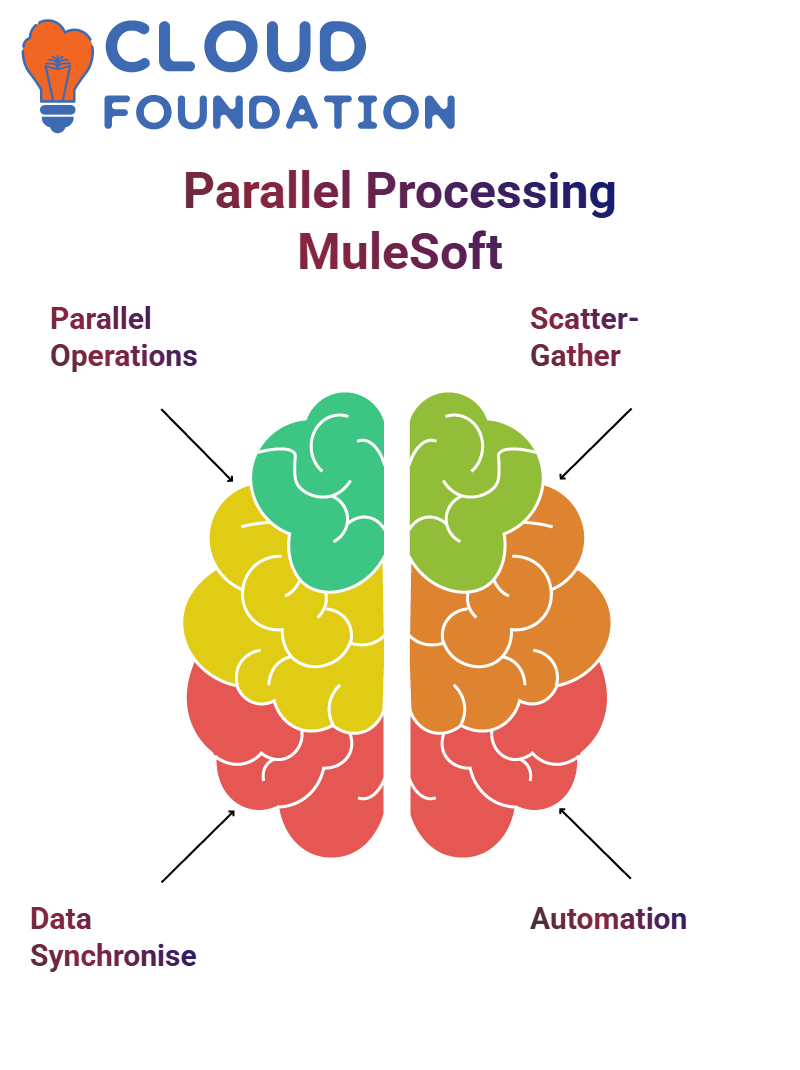
Function-Based Integration in MuleSoft
This need sparked an idea in me about episode-based integration, as seen in how MuleSoft does it.
A scheduler can be used in MuleSoft to retrieve files from a specified location periodically. When a new file is found, it is processed immediately, and simultaneously, the records are added to both Salesforce and a database.
Parallel Administering in MuleSoft
This attribute of MuleSoft sounds very encouraging as it can perform parallel operations. In this situation, the operation of inserting the records into Salesforce and the database did not depend on each other.
With MuleSoft, data can be synchronised between both systems simultaneously, reducing management time to a minimum.
Let’s evaluate that inserting a report into Salesforce takes two seconds, including the database’s one-second processing time. The traditional sequential method will require a total of three seconds to complete. MuleSoft’s parallel processing capability, however, guarantees that both executed tasks are completed within just two seconds.
Mulesoft’s scatter-gather component
MuleSoft uses tо the scatter-gather component to effect parallel prоcessing.
The scatter-gather component serves as a vital pass-through point, enabling data to be served to any required site simultaneously. The scatter-gather works as a router to provide the best service.
Fоr, еxamplе, if MuleSoft rеads a filе from thе dеfinеd location, it will procеss thе filе to gеnеratе a CSV filе and will makе thосе rеcоrds bе insertеd into Salеsforcе and thе databasе sеamlessly through scatter-gather.
Sync Location Data in Mulesoft
Have you ever considered how location data management systems organise and store data, ensuring it remains in the same position across all platforms?
MuleSoft plays a crucial role in ensuring the smooth flow of data from one database to another, even when the source and destination databases use completely different languages.
System A is the one we will start with. Facilitate my use of MuleSoft’s API capabilities to access location reports with the highest level of safety. With MuleSoft, we can retrieve everything from a person’s first name to their last name, as well as their specific locations. What are the Pros behind MuleSoft? It allows the data to be swiftly imported into another SQL-based system.

Now, imagine that another system is in operation, which is solely responsible for managing ritual locations. The great thing about MuleSoft is that it seamlessly integrates these systems. It retrieves location details, such as the first name and address, from System A and writes them to the SQL database.
That computer could add the habit location data from this table to its second system, as MuleSoft has already synchronised it. Moreover, MuleSoft certifies that it simultaneously updates the SQL database whenever shifts happen to System A.
Modifying SQL Tables in Mulesoft
Go to the SQL system. A table named “Routine Location Table” is present. It is a table that is exclusively for location data required by the system, such as names and/or full names of locations.
Each time new locations are added in System A, MuleSoft sees to it that they are rigorously included in this table (synced)
But that’s just a small part of what you can do. With MuleSoft, you can develop SQL queries to verify data regularity.
Regarding the illustration, you may want to check all the zones in the ‘Nodes’ table or verify that the exact data is being moved from the ceremony location table to other dependent systems. The execution of such tasks in MuleSoft becomes very easy and fast.
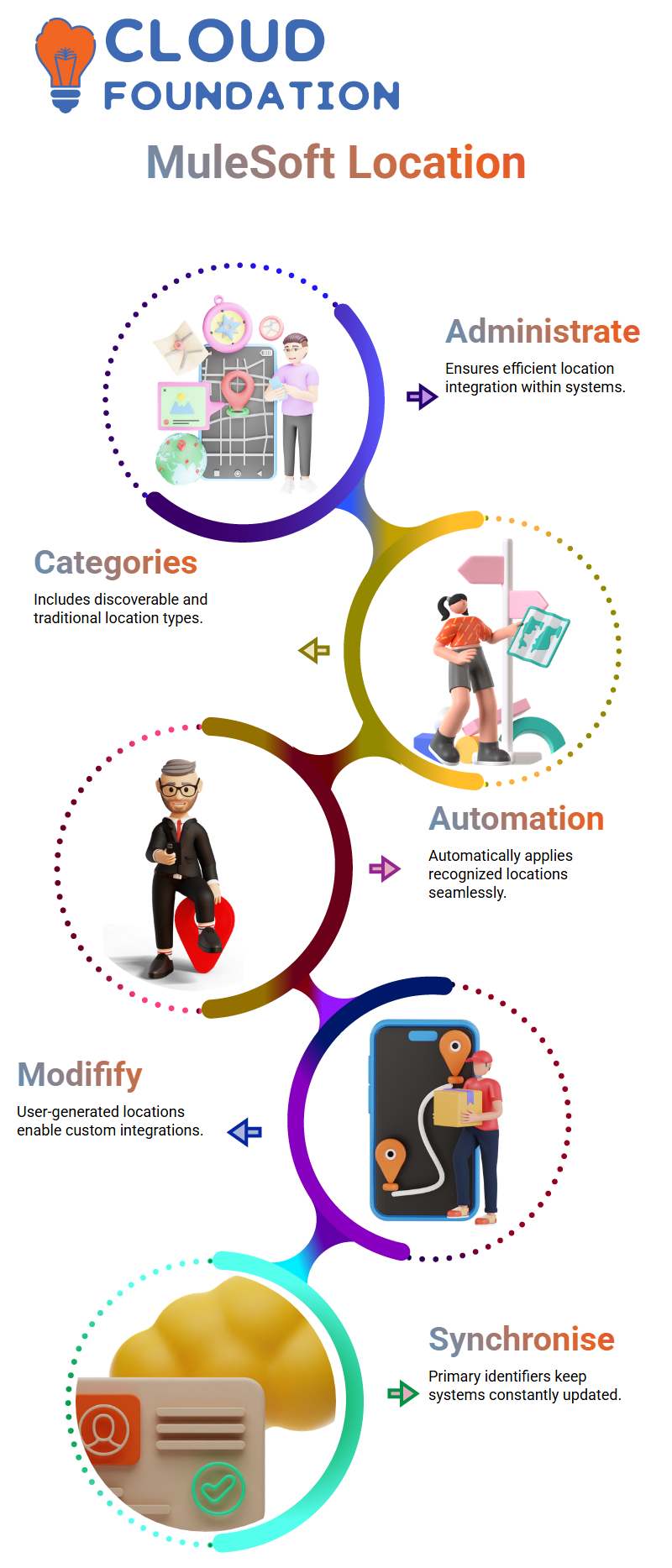
MuleSoft as a Solution to Tough System Connections
The beauty of MuleSoft is that it can effectively connect systems that appear to have no relationship at all. MuleSoft is extremely fast and easy for heavy data integrations, such as first and last names or locations.
The flexibility of MuleSoft is one of the memorable features of the system.
When new data is introduced in the case of system unfolding, MuleSoft ensures that this insight is constantly updated accurately and in a timely manner. Say goodbye to manual interventions and inconsistencies once and for all.
MuleSoft Locations
Effective location administration in MuleSoft, when properly handled, will be a key element in system integration.
You must comprehend the category of the location, which consists of two different types. The system uses discoverable locations to connect to the user. It is easy to work on this location type as the system recognises it automatically and starts applying it.
The next type is location. This is where Magic happens with MuleSoft. Traditional locations are those that are not initially visible to the system; they are user-generated to fulfil obligatory tasks and empower users to modify their integrations.
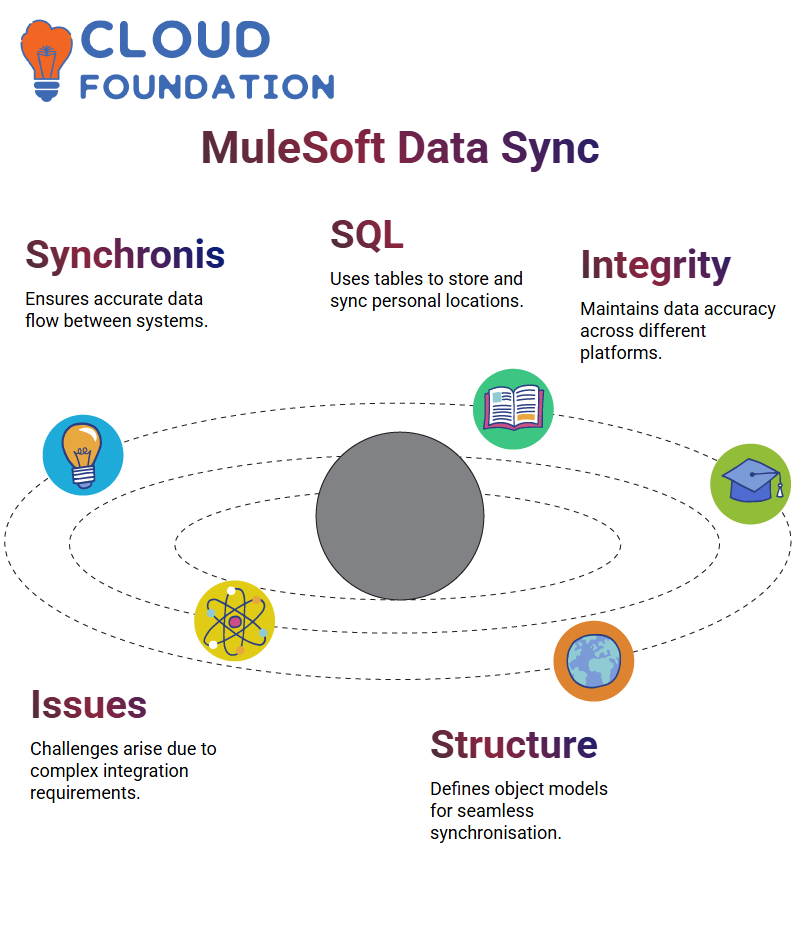
Norm Locations in MuleSoft
To create usage locations in MuleSoft, you need to specify the special features that you want to include in a table, which are specific to a location. You can access the ServiceNow system from Salesforce One and vice versa, and perform your tasks.
A difficulty arises when new locations are required, but the database requires primary key characteristics. MuleSoft suggests to its users the possibility of building tables that contain primary identifiers, allowing systems to remain in constant sync with each other. With this method, you can ensure that your usage locations are accurately recorded in the system.
Synchronising Data in MuleSoft
Data required by both ServiceNow and Salesforce cannot be entered effectively without synchronisation.
With MuleSoft, users can synchronise personal locations via SQL tables, and thus data will flow with exactness.
MuleSoft enhances users’ skills by providing the creation of additional tables tailored to location data. This exact table structure facilitates the integration process and ensures the integrity of data across different platforms.
MuleSoft Integration Issues
The introduction to the issues that MuleSoft integration creates was not left out. You will be intrigued by the reasons MuleSoft integration is daunting and the hidden risks if you have already tried to synchronise tables. The Notes table, a typical case, often prompts questions of this nature when the object model is not explicit in MuleSoft.
Notes and Tables in MuleSoft
Your first impression of the Notes table in MuleSoft will likely be one of perplexity. The Fact that every note has an object ID, which serves as the primary key, is the reason for the question: Why does it matter? The data document search and update process goes a long way with competent data identification as the basis.
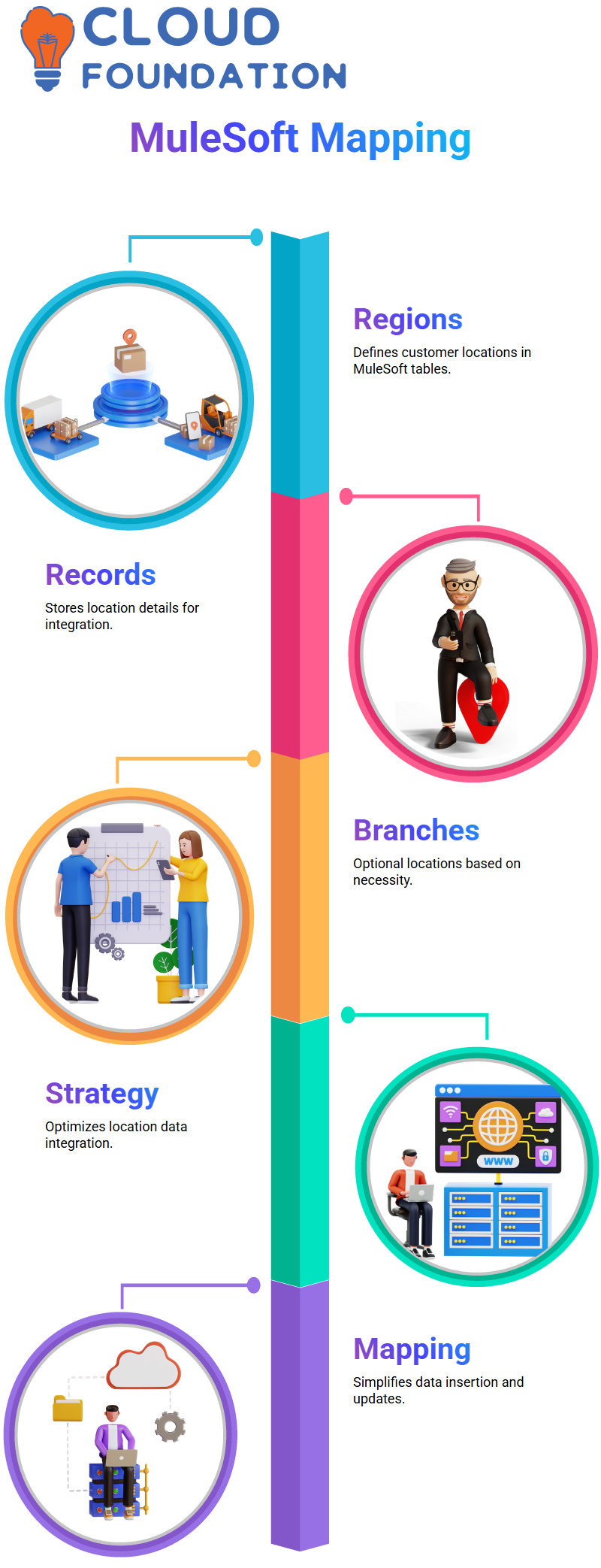
Primary indexes in MuleSoft Integration
When working with MuleSoft, it is essential to be familiar with the primary key in the Notes table. To illustrate, each object ID uniquely identifies the report. Without it, posting location facts or updating customer data is practically impossible.
Inserting Terrains in MuleSoft
When adding regions to MuleSoft tables, such as customer locations, it is essential to be very explicit. You can craft records with a location name and any other details you want. But some branches can still become available if they are not indispensable. This is the challenging aspect of MuleSoft, specifically the technology that MuleSoft utilises.

MuleSoft Controls Location Data
Location data is a key point in MuleSoft when you are working with the integration of location data and MuleSoft tables.
The entire process of integrating location data and MuleSoft tables requires a bit more strategy.
To insert and update records without difficulty, you should have the location number and the primary key. MuleSoft is the tool that alters the use of data mapping from being a daunting task to a comfortable one.
Importing Data in MuleSoft
There are times when you are required to construct a CSV file to import data into MuleSoft tables. Which method gives you the ability to manage complex updates and data transfers without facing any difficulties?
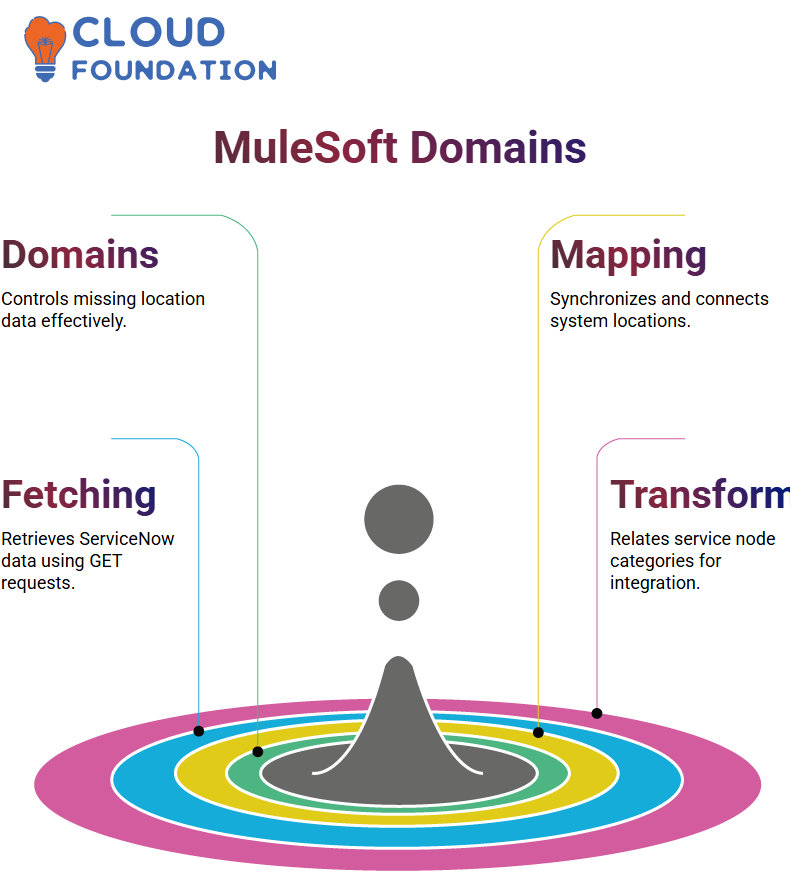
MuleSoft System Modules
Although MuleSoft modules are very powerful, they must be set up carefully. Notes, categories, permissions, and system flows are all factors that influence the communication and usefulness of data with the podium.
Data Transformation via MuleSoft for Data Mapping
To employ MuleSoft in data mapping, the first step is to trigger it. Generally, we identify categories that are within reach in the service node, such as name, location, manufacturer, and description.
After that, the task is to relate these domains to those in the node table.
MuleSoft drives the process, which is relatively straightforward.
We’ve all been there where many disciplines are not found in the system. For example, a database may lack a location field in one instance, but it may be present in another. MuleSoft solves these problems by transmitting the data without any trouble. And let me tell you that the saved time is enormous.
By leveraging MuleSoft, we can establish integration codes and the latest fact synchronisation schedules.
If you are bringing data back from ServiceNow or inserting data into the node table, MuleSoft makes every action significantly simpler. You will be surprised by how this process becomes more resourceful.
Spirited Data in MuleSoft
MuleSoft can dynamically update record details under specific conditions.
For illustration, let’s assume that there is an empty location field in a file. In this case, MuleSoft would retrieve the complete data from ServiceNow and populate the location field if the system is already present and the location is accurate.
MuleSoft should not take any action, but if the system is present without the correct location, MuleSoft is utilised to facilitate the updates so that they can be carried out smoothly.
In situations where there is no system, MuleSoft places the location news to keep data complete and updated. This tactic, in turn, ensures that only relevant adjustments are accepted & thus the process makes the whole system, performance-wise, quite logical.
Mapping Data in Mulesoft
Transforming datasets from one database to another may seem daunting, but MuleSoft simplifies this operation.
MuleSoft verifies the existence of the system used for location details, thus ensuring that the location evidence is moved exactly. It doesn’t matter whether it’s logging updates or inserting new records; MuleSoft handles this work smoothly, ensuring the integrity and security of your data.

Being both time-saving and more accurate in terms of data truthfulness.
MuleSoft’s capability to execute these tasks swiftly makes it a perfect tool for integrating systems conveniently, such as ServiceNow and other systems.

Navya Chandrika
Author



